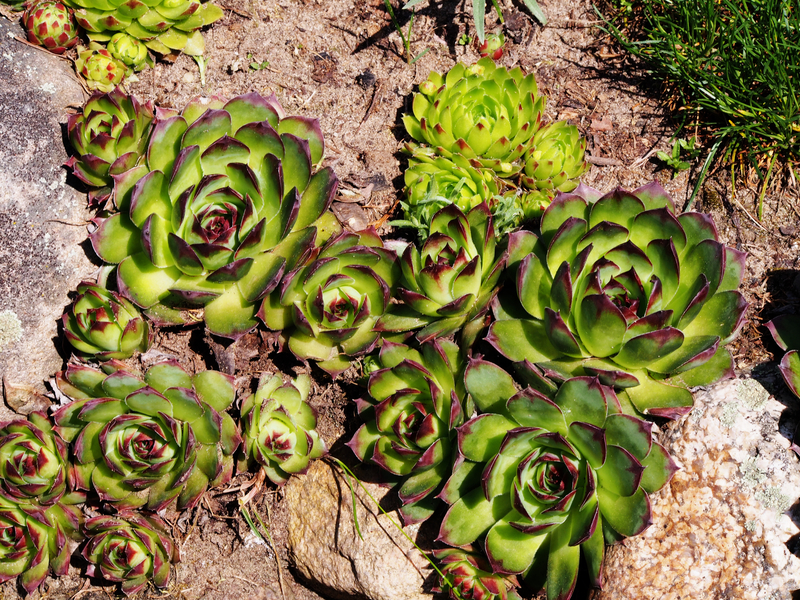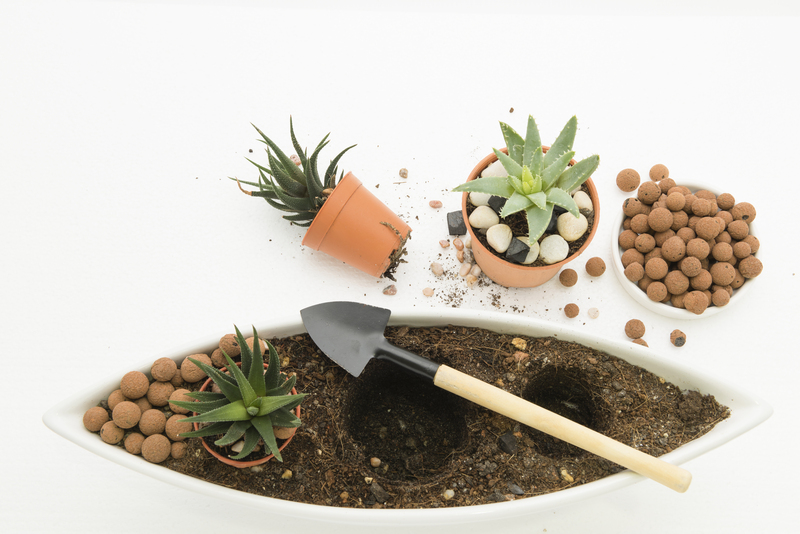Gardening's role in reducing climate impact
Posted on 22/06/2025
Gardening's Role in Reducing Climate Impact: How Your Garden Can Help the Planet
Gardening isn't just a pleasurable hobby--it is also a powerful tool in the fight against climate change. Whether you have a sprawling backyard, a modest urban plot, or simply a few pots on a balcony, your gardening choices can make a significant difference in minimizing your carbon footprint and fostering environmental sustainability. In this comprehensive article, we delve into how gardening reduces climate impact, exploring various methods, benefits, and practical tips for gardeners of all levels.

The Connection Between Gardens and Climate Change
As the world faces increasing environmental challenges, individuals and communities are seeking actionable ways to reduce climate impact. Gardening is emerging as one such method, offering sustainable solutions that aid both the environment and human health. Here's why your garden matters:
- Carbon sequestration: Plants absorb carbon dioxide, a major greenhouse gas, helping to offset emissions from energy use, transportation, and industry.
- Temperature regulation: Gardens provide cooling effects, mitigating urban heat island effects and reducing the need for artificial cooling.
- Biodiversity support: Diverse gardens act as habitats for wildlife, pollinators, and beneficial insects, maintaining ecological balance.
- Soil improvement: Healthy soils in gardens store more carbon and reduce runoff, preventing erosion and water pollution.
- Resource efficiency: Growing your own produce and using compost reduces reliance on packaged goods and the energy-intensive agriculture industry.
What is Gardening's Role in Mitigating Climate Change?
When discussing gardening's role in minimizing climate impact, it's crucial to recognize that every plant grown and every patch of healthy soil contributes toward a more resilient planet. Gardens absorb atmospheric carbon dioxide, support pollinators, reduce food miles, and offer green spaces that directly and indirectly help lower global warming risks.
Key Ways Gardening Helps Fight Climate Change
There are numerous ways in which gardens contribute to reducing climate change effects. Let's break down the direct and indirect benefits of climate-friendly gardening practices:
1. Carbon Sequestration in Plants and Soil
Photosynthesis is the natural process through which plants absorb carbon dioxide (CO2) from the atmosphere, storing it in their roots, stems, leaves, and the soil. Trees and perennials, in particular, are effective at sequestering carbon over long periods. Even a small home garden--with rich soil, perennial beds, and a mix of annual crops--contributes to this essential function of climate mitigation gardening.
- Planting trees and shrubs: These long-lived plants capture and store significant amounts of CO2.
- Building soil organic matter: Adding compost or mulch to your garden improves soil carbon storage.
- Maintaining ground cover: Reduces soil erosion and retains carbon in the earth.
2. Reducing Urban Heat and Enhancing Local Cooling
Gardens, especially those with dense plantings and shade trees, absorb sunlight and convert it into energy, thus lowering surrounding air temperatures. Called the urban heat island effect, densely built cities without green spaces tend to be several degrees hotter than rural areas. By introducing more gardens in cities:
- You reduce energy demand: Less need for air conditioning and fans, lowering emissions from power generation.
- You support healthier living environments: Cooler outdoor air means less heat-related illness and increased comfort for residents and wildlife.
3. Supporting Biodiversity for Climate Resilience
Thriving gardens are essential habitats for insects, birds, and other wildlife--many of which are critical for pollination and pest control. Biodiversity-rich gardens help ecosystems resist and recover from environmental stresses, including those driven by climate change.
Gardening's effect on climate change is magnified by prioritizing native and drought-tolerant plants, creating corridors for pollinators, and offering nesting spaces for beneficial fauna. Restoring lost biodiversity makes local environments more resilient to extreme weather, drought, and disease.
4. Reducing Food Miles and Supporting Sustainable Agriculture
One of the often-overlooked advantages of home gardening lies in reducing food miles--the distance food travels from farm to table. Commercial agriculture and long-haul food transportation burn significant fossil fuels, producing greenhouse gases. By growing your own vegetables and fruits, you cut out these emissions almost entirely.
- Fresh produce from the backyard: No packaging, refrigeration, or shipping needs.
- Local food systems: Community gardens and urban farms reduce the environmental cost of food supply chains.
5. Composting and Organic Waste Management
Composting transforms kitchen scraps and garden waste into nutrient-rich soil, reducing methane emissions from landfills. Landfill methane is a potent greenhouse gas. When organic material breaks down anaerobically (without oxygen), it releases significantly more harmful gases than composting at home or in community projects. Using compost boosts soil health, helps plants grow, and closes the nutrient loop in the local ecosystem--all of which amplify gardening's role in reducing climate impact.
6. Water Conservation Through Smart Gardening
Water-wise gardening strategies conserve this precious resource, reducing the need for energy-intensive irrigation and helping plants weather droughts brought on by climate change. Techniques include:
- Mulching: Retains soil moisture and suppresses weeds.
- Drip irrigation: Targets roots directly, minimizing water waste.
- Collecting rainwater: Uses natural precipitation rather than treated tap water for gardens.
7. Encouraging a Shift to Low-Input, Sustainable Gardening Practices
The use of synthetic fertilizers and pesticides leads to increased greenhouse gas emissions, as well as pollution of waterways. Eco-friendly gardening--using organic inputs, hand tools, and natural pest control--helps keep energy use and emissions low, further promoting gardening's impact on climate change reduction.
How to Make Your Garden Climate-Friendly: Practical Tips
Ready to maximize your garden's positive effect on the climate? Here are actionable steps for gardeners at all scales:
Choose Native and Climate-Adapted Plants
- Plant native species: They require less water, are more resistant to local pests and diseases, and help sustain the local ecosystem.
- Opt for perennials: Trees, shrubs, and perennial flowers store carbon for many years and require less disturbance of the soil.
Prioritize Soil Health
- Add organic matter: Regularly amend your soil with compost, leaf mold, or well-rotted manure to increase its carbon-holding capacity.
- Minimize tilling: No-dig or low-till gardening protects soil structure and keeps carbon locked in the ground.
Composting and Mulching
- Create a compost bin: Recycle kitchen and yard waste, turning them into a valuable soil amendment.
- Use natural mulch: Apply bark chips, straw, or leaf litter to suppress weeds and hold moisture in the soil.
Practice Water Conservation
- Collect rainwater: Install barrels to harvest and store rain runoff for use in your garden.
- Choose drought-tolerant plant varieties: Especially important in regions likely to experience water shortages due to climate change.
- Water early or late in the day: Reduces evaporation and helps plants utilize water more efficiently.
Encourage Wildlife and Pollinators
- Install pollinator-friendly flowers: Attract bees, butterflies, and other beneficial insects.
- Leave some wild areas: Avoid over-pruning; let parts of your garden grow naturally as habitats for native wildlife.
- Provide shelter: Birdhouses, brush piles, and ponds create habitats and refuges for different species.
Grow Your Own Food
- Start small: Even a few tomato plants or a salad patch helps reduce reliance on store-bought produce.
- Join or start a community garden: Share resources, knowledge, and harvests for a larger, collective climate benefit.
Minimize Use of Chemicals
- Use organic fertilizers and pest controls: Chemical alternatives often have high carbon costs and can leach into local water systems.
- Adopt integrated pest management: Combine cultural, biological, and manual controls for healthier plants and environments.
The Broader Environmental Benefits of Gardening
The positive influence of gardening on the environment extends much further than just climate change mitigation. Here are some underappreciated but vital co-benefits:
- Improved air quality: Plants absorb pollutants while releasing oxygen, creating fresher, cleaner air.
- Enhanced mental and physical health: Time in gardens relieves stress, encourages exercise, and links people to nature--a crucial motivator for broader environmental action.
- Community building: Shared gardens build social ties and foster collective stewardship of the environment.
- Increased green infrastructure: Gardens reduce runoff, improve infiltration of rainwater, and enhance urban landscapes.
Success Stories: Gardening and Climate Action in Practice
Across the world, individuals and communities are witnessing the benefits of climate-conscious gardening. Here are a few inspiring examples:
- Urban rooftop farms: Cities like New York and Singapore are transforming rooftops into gardens, absorbing CO2, producing food, and insulating buildings.
- Community food forests: Groups are converting unused public land into perennial food forests that sequester carbon and provide free produce for locals.
- Backyard pollinator corridors: Residents are linking gardens with native wildflower strips to support bees and butterflies, fostering climate resilience.

Future Outlook: Scaling Up Gardening's Climate Benefits
To truly scale the climate impact of gardening, broader adoption of sustainable practices is needed--from individual plots to commercial horticulture and city planning. Here's what the future might hold:
- Integration into urban planning: Cities including gardens, green roofs, and tree canopies in their designs.
- Policy support: Incentives for composting, rainwater harvesting, and native landscaping.
- Educational initiatives: Schools and organizations teaching climate-friendly gardening methods to all ages.
Conclusion: Every Garden Counts in the Climate Fight
Gardening is more than a pastime--it is a direct form of climate action that is accessible to nearly everyone. Through thoughtful plant choices, resource conservation, and organic practices, gardens become living solutions to global environmental challenges. Whether you manage a single potted plant or lead a community garden, your efforts collectively help lower greenhouse gas emissions, drought-proof your landscape, support wildlife, and build a healthier, more sustainable world. By embracing gardening's role in reducing climate impact, we not only create beautiful, productive spaces but also nurture hope for a greener planet, one garden at a time.

